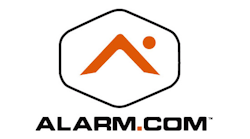This article originally appeared in the May 2022 issue of Security Business magazine. When sharing, don’t forget to mention Security Business magazine on LinkedIn and @SecBusinessMag on Twitter.
In the security industry, the expression “peace of mind” has come to signify the collective emotional benefit of security services. Today, those words have never been more appropriate.
As we enter the third calendar year of the pandemic, consumers continue to respond and adapt to its challenges, from protecting their physical health to navigating countless new challenges daily. “Peace of mind” has become a tangible – albeit elusive – counterpart to the worries and uncertainty of this era; meanwhile, home has become heart of it all.
As the pandemic forced many consumers to turn their homes into comprehensive live-work-play centers, there has been a heightened reliance on home services for security and security-adjacent needs. Many of those services offer significant potential for recurring monthly revenue, and consumers are willing to pay for home services that offer a clear and tangible value.
Recent data from research firm Parks Associates indicates that convenience, comfort and peace of mind are the top three benefits influencing smart home device purchases; 39% of consumers value convenience, while 34% said that comfort is a driving factor, and 31% said peace of mind is key.
Security service providers can capitalize on this consumer desire for peace of mind and expand into other offerings that address this value.
Adoption of Smart Home Devices
IoT manufacturers have remained attuned to these benefits all along. Despite the disruptions of the past two years, the smart home industry continues to see slow but steady expansion, with a proliferation of new smart home devices and manufacturers.
Industry innovators recognize that historically, the smart home consumer base has consisted largely of groups with enough disposable income to afford trendy new technology; however, a wider variety of new device entry points has made smart home technology far more mainstream, and far more affordable. Despite ongoing concerns about privacy and security, the smart home industry’s consumer base continues to grow, expanding beyond novelty-driven early adopters and into less adventurous demographics.
Consumer interest in smart home devices, in fact, rose substantially in early 2021. Among households actively shopping for a smart home device, with plans to purchase in the next six months, the top three smart home devices were smart door locks, smart video doorbells and smart light bulbs, with networked cameras and outdoor light fixtures with a video camera close behind. Smart appliances are also growing in popularity.
Most consumers are still new to smart home products and the extended services that accompany them. As device collections continue to grow, manufacturers, platform providers, integrators and service providers can – and should – work together to educate their customers on the use cases for various product combinations.
Ultimately, answering the need for unified control and integration will continue to be a key factor in pushing the market past its current adoption of smart home devices.
Adoption of Home Security
Alongside the moderate growth of the smart home device sector, home security systems have experienced more meaningful growth and market penetration in recent years. In 2018, 26% of U.S. broadband households owned a home security system. By 2021, that number jumped to 36%, creating the opportunity for similar growth in adoption of the devices that transform a home security system into a smart home management tool.
Given the heightened need for security many felt during the pandemic peaks, as well as general community unease and rising crimestatistics, we can likely expect a continued increase in the demand for home security systems, and a corresponding increase in compatible smart home devices.
Traditional residential security players continue to integrate advanced technologies, especially around AI and video analytics, in order to create new service offerings, address new customer segments, and integrate with Google and Amazon. These new entrants and innovative products are helping redefine residential security services and expanding them into new areas. Consumer choice regarding installation, device bundles, and monitoring services is a driving force for both professional and DIY solutions.
Broadening consumer adoption of smart home products through retail channels, traditional home security system providers, and internet service providers (ISPs) creates an onboarding ramp to the development of new professional services – or added revenue on existing services. As with smart home devices, home security providers have an opportunity to educate their customers about the possibilities for integration and automation of functions in and around the home.
Integration and Connectivity
Connectivity is a central factor in home security innovation; the products and services that successfully deliver peace of mind do so by harnessing the power of greater connectivity.
For example, 23% of home security system owners want to extend their systems to protect their yard and outdoor items. Consumers concerned about extending the home security system to the entire property line are drawn to outdoor cellular sensors that operate on battery power and do not require Wi-Fi.
Similarly, 69% of home security system owners are interested in vehicular add-ons that offer protection hundreds of miles away from home, integrating location awareness, diagnostic services, and driver behavior insights into the security system’s alerts and actions.
Other integrations growing in popularity include:
Energy management. Smart thermostats are a common smart home device, and consumers are accustomed to using them to save on heating and cooling costs. But when paired with other smart devices like smart light bulbs and meters on a centralized home security platform with AI-driven insights, they can create far greater efficiencies and comforts. For example, 22% of U.S. broadband households age 50 and over are interested in a smart thermostat that can detect sleep patterns and adjust the home’s temperature to optimize sleep quality.
Independent living. Connected health products and monitoring services open new opportunities to serve consumers at home. Smart home devices, personal emergency response systems (PERS), and monitoring services combine to deliver solutions that help seniors age in place in the comfort and safety of home. The demand is undeniable; 78% of caregivers interested in in a professionally installed, sensor-based independent living solution for an aging loved one would be willing to pay $40/month for the service, while 94% say they would pay $10/month.
Personal property protection. Typically, standard homeowners’ insurance policies limit coverage of high-value items of personal property, leaving homeowners to take additional steps to protect them from theft or damage. By combining sensors that detect a disruption in an item’s position with smart tracking tags and other security product features, homeowners can create simple but powerful protections for the items that matter most. In fact, 51% of self-monitoring security system owners would now like to add smart tag tracking to their system, up from just 38% in 2020.
Broadband’s Growing Importance
Broadband services play an increasingly important role as smart home devices and services are increasingly adopted. It is important to factor in the presence and strength of broadband service available to home security device consumers – 23% of U.S. broadband households reported plans to upgrade their home broadband, driving up broadband service average revenue per unit (ARPU).
In multi-family housing and other multi-dwelling unit (MDU) environments, aggressive efforts are underway to expand bulk broadband services, further enhancing the opportunity of connected devices and household services.
Personalized, Predictive, Proactive
Security providers have an unprecedented opportunity to create comprehensive home management solutions that meet and exceed consumer expectations. The progress fostered by connectivity, artificial intelligence, video analytics, and integration among products increases the applications, services, and overall value of smart home solutions for consumers.
As capabilities expand, successful providers will capitalize on the many new ways to transform the smart home into an increasingly more personalized, predictive, and proactive experience – one that delivers the peace of mind every household needs and deserves.
Andy Feldman is VP of North American Field Sales for Alarm.com and has more than 25 years experience in the security industry. Request more info about the company at www.securityinfowatch.com/10216128.




